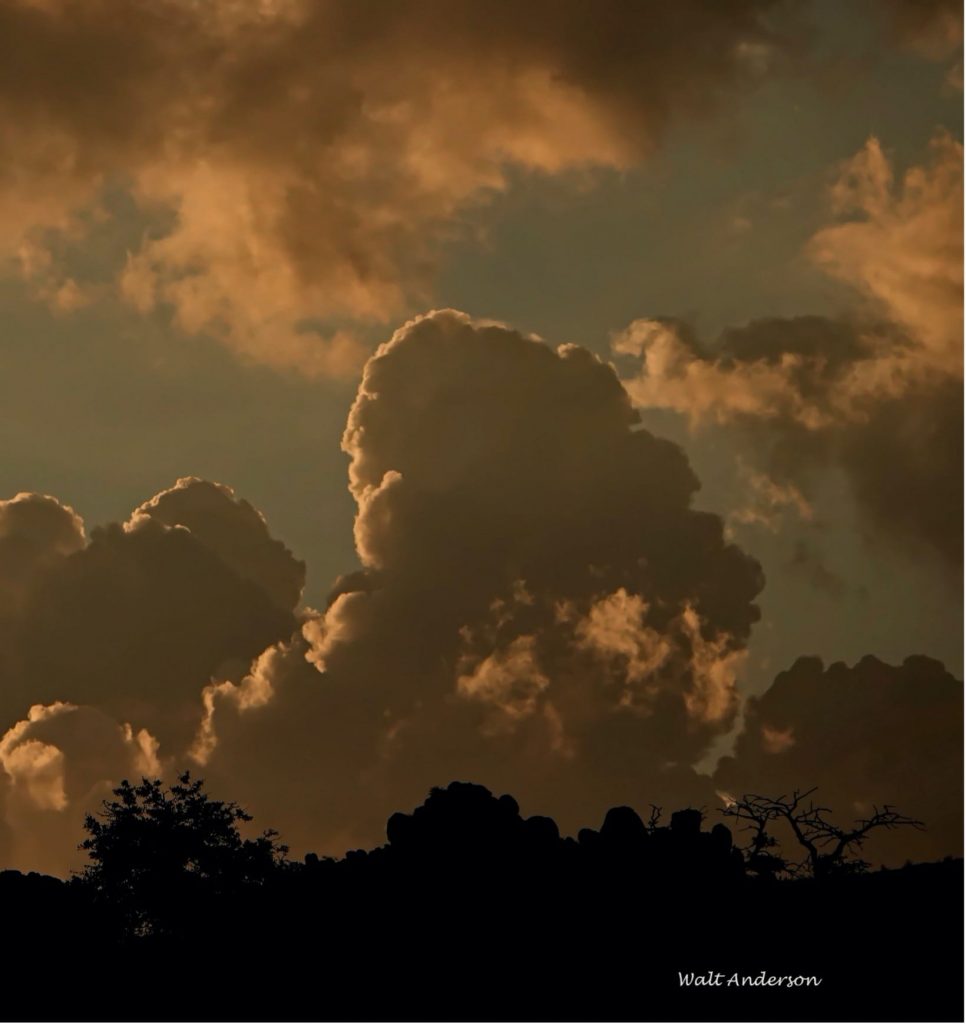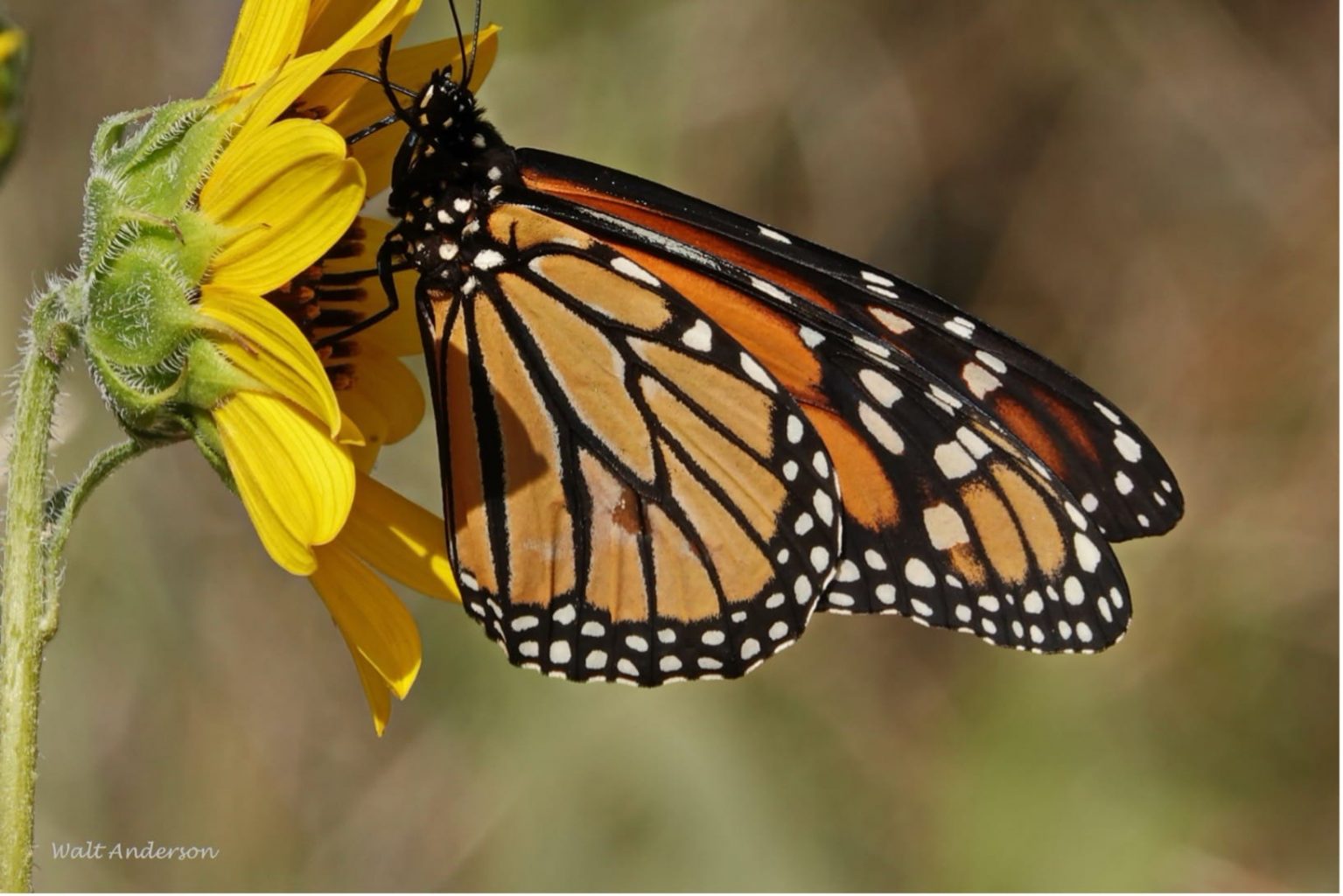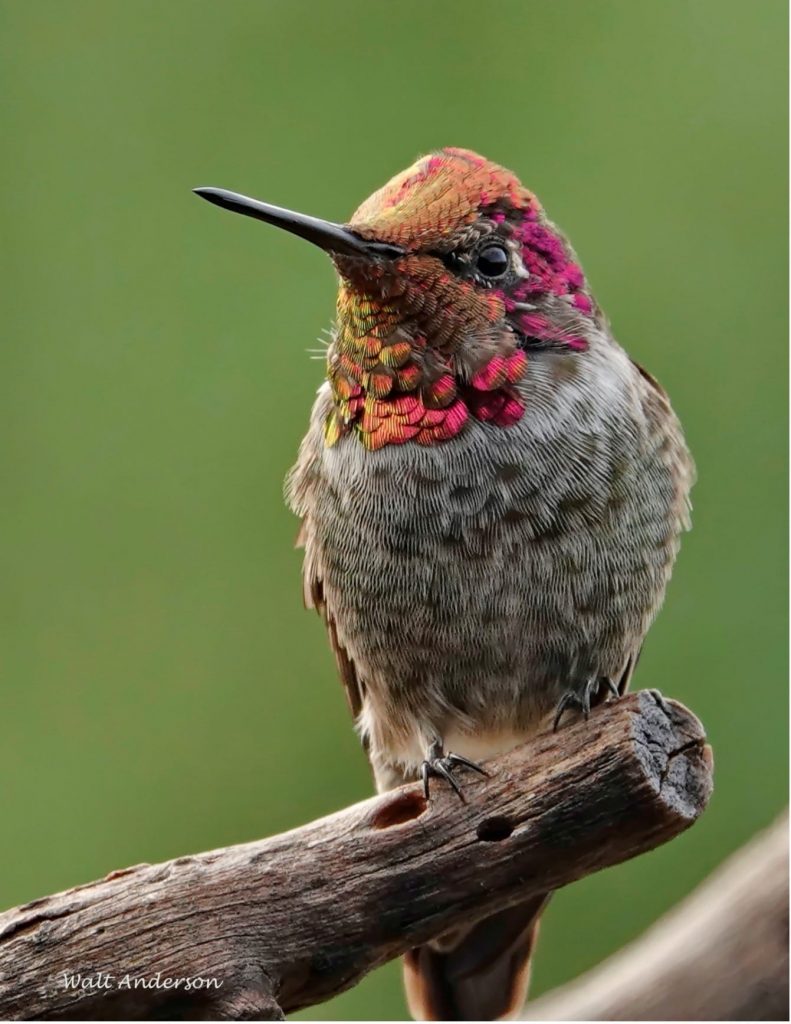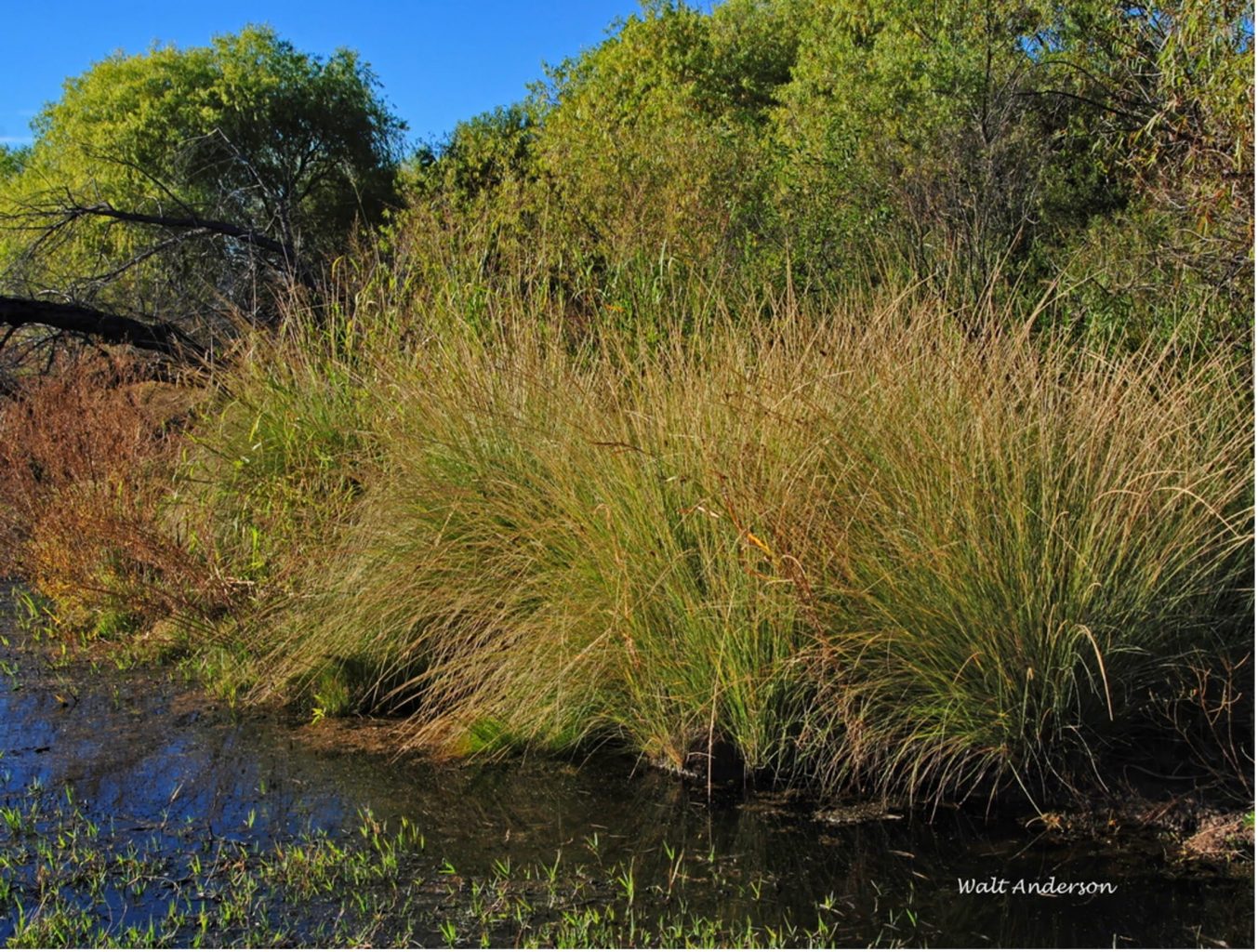
Monsoon Magic, by Walt Anderson
Arizona is a land of contrasts, and nothing illustrates that better than a generous monsoon season in the midst of a long-term drought. Buenos Aires National Wildlife Refuge is a biodiversity hotspot, blessed with vast grasslands, rich riparian areas, and the unique mountain ecosystems in Brown Canyon in the Baboquivaris. Best of all, it is protected from development and thus one of the prime places to see the best of nature in a world becoming ever more dominated by the works of humans.
Nature is resilient. When conditions are ideal like this summer, the landscape bursts with life. Hidden seedbanks give up their secrets, and plants not seen for a long time suddenly grow in profusion. Wildlife responds too, joining the plants with exuberant fecundity.
I have not been able to get to the refuge this summer, but I have been lucky enough to capture some images of nature’s responses to the monsoon rains here in Arizona. They are examples of the kinds of life you could see if you visited the refuge at this time. But wherever you are, I hope these images will help stimulate you to get out there in nature. This is a summer to remember.

Remnants of Tropical Storm Kay passed through Arizona this week. When a sunrise brings you thunderheads, you know you are in for a good day!

There is magic in the dynamics of a growing thunderhead. Feeding off the sun’s heat, the clouds climb high into the sky, huge columns of intense energy soon expressed in streaks of lightning and explosions of thunder. Then the rains begin, often hesitantly with big drops pelting the ground, then followed by full-blown blasts of wind-driven water.

The grasslands take on an entirely new personality. Even the typical overgrazed rangelands of Arizona are lush this summer, allowing each grass to get a head. In dry years, the bovine hordes keep the grasses from flowering, which makes working a grass key impossible. That’s not an issue at Buenos Aires, which is the largest ungrazed grassland in the state.

Grasses and composites are particularly diverse in late summer. In good years, sunflowers at Arivaca Cienega tower above your head and attract plenty of pollinators.

These include the threatened Monarch butterfly, one of the most amazing insects on the planet.

Every conceivable flower color is out there now, including the brilliant red corollas of Beardlip (Southwestern) Penstemon.

Red flowers like the penstemon, paintbrush, scarlet morning glory, and the like are designed to give their rewards to hummingbirds, who serve as their primary pollinators. This Anna’s male, a year-round resident, now has to share with summer resident Black-chinned and feisty migrant Rufous Hummingbirds, but this year, there is abundance for all. Still, the little tyrants spend plenty of energy chasing each other!

Abundant Scruffy Prairie Clover (Dalea albiflora) attracts plenty of pollinators, like this California Patch.

It also brings in the dramatic Fire-tailed Scoliid Wasp (Triscolia ardens), a peaceful pollinator (dusted liberally here) that has no interest in stinging you (though it will defend itself if grabbed!). When the female is not bulking up on nectar, she searches the ground for grubs of scarab beetles. She digs them up, stings them into paralyzed submission, and oviposits an egg into the victim’s back. When the larva hatches, it feeds upon grubsteak.

A patch of Dalea is a fantastic place to watch insects; it’s a natural hotspot for pollinators, including this bumblebee.

A non-native honeybee arriving with its carry-on bags.

And all eyes are on the gorgeous Northern (or Common) Buckeye.

This is the peak of flowering for the delicate clusters of white Ageratina, a member of the sunflower or composite family.

A very different composite is the Ragleaf Bahia, which is having the best year I have ever seen. This one hosts a common soldier or leatherwing beetle (Chauliognathus opacus). In appearance, it seems to mimic a firefly. Gardeners in the know appreciate them for both their pollination services and their predation of aphids and other pests. Beetles in the Cantharidae family produce a blistering agent, cantharidin, as a defense. Humans have used it to treat warts and in other folk medicines, but it is quite toxic and nothing to fool with. Trust me—don’t suck a soldier beetle!

Just as grasses (e.g., wheat, barley, rye, sorghum, corn) are vital to human diets, grass seeds support many birds, mammals, and insects (including ants). Here a Lesser Goldfinch mandibulates seeds of a millet grass that sprouted from left-over birdseed that germinated in the wet conditions. Who had the gall to decide that this beautiful bird was “lesser”?

The Cliff Chipmunk loves millet seeds too, eating some and stuffing more into his cheek pouches. He certainly is not going against the grain.

The perky little Juniper Titmouse loves sunflower seeds, and it also eats pinyon nuts, acorns, and various insects. These are cavity nesters, dependent upon finding a suitable hole, whether “natural” or excavated by a woodpecker.

Speaking of the devil, the Hairy Woodpecker is one of the primary cavity nesters that creates nesting habitat (not intentionally!) for secondary cavity nesters like titmice, nuthatches, and Ash-throated Flycatchers.

Many birds become vocal again. Some have waited for the summer rains to stimulate their breeding.

What’s good for the songbirds is definitely good for their predators, like the intense Cooper’s Hawk.

Cliffrose is a double-dipper in the blooming game, having had its flower show in the spring and now again in late summer. The air is filled with the redolent scent of their blossoms.

The Southwestern Vervain does the same, maximizing its flowering and seed-production whenever conditions are favorable. It thrives after fire in the chaparral. You might think at first glance that the flower is radially symmetrical, but look more closely. One of the five petals is cleft, so its symmetry is bilateral.

The Birdbill Dayflower (Commelina) is also bilaterally symmetrical (unlike the word itself!) Notice the curving pistil perfectly situated below the yellow stamens set to transfer pollen to a visiting insect. Flowers were around long before curious humans came along, but how wonderful it is that their amazing floral adaptations just happen to appeal to our esthetic senses! The huge floral industry (a bunch of petal pushers) is based on our own attraction to the scents and sights of the sex organs of flowering plants. Isn’t that a pollen?

The final plant of the day is the Woolly Mullein, a biennial featured in an earlier essay. I hear it comes from good stalk. Instead of the normal straight flower column, this one is flared in a cristate form, similar to the occasional occurrence in Saguaros and even Poison Oak. Also called fasciation (how fascianating!), this rare abnormal growth has been found in some members of over 100 families of plants. The apical meristem where the growth occurs is damaged in some way by a mutation, injury, freezing, bacterial or fungal or viral infection, or insect or mite damage. Damaged or not, these are special.

Just as when unusually heavy winter rains bring carpets of desert flowers in the spring, a good monsoon season brings us the gift of floral and faunal extravagance. We can’t count on this bounty every year, so when it happens, we need to take the opportunity to revel in its magnificence. It also reminds us that we need natural open spaces where native diversity can thrive. In landscapes heavily impacted by humans or their commensals (e.g., livestock), there tends to be a homogenization effect, often dominated by aggressive non-native weeds.
As we face a changing climate, it becomes even more important to “keep all the pieces,” to protect and preserve the full range of natural habitats. Buenos Aires is one such refuge for plants, wildlife, and even us respectful, visiting humans. The Friends of Buenos Aries National Wildlife Refuge gives caring people an opportunity to make a difference. Please spread the word and help out as much as you can! Thanks.
